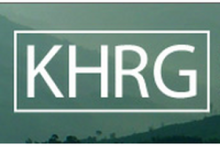Resource information
This report examines the situation faced by Karen villagers in Thaton District (known as Doo Tha Htoo in Karen). The district lies in what is officially the northern part of Mon State and also encompasses part of Karen State to the west of the Salween River . Successive Burmese regimes have had strong control over the parts of the district to the west of the Rangoon-Martaban road for many years. They were also able to gain 'defacto' control over the eastern part of the district following the fall of the former Karen National Union (KNU) stronghold at Manerplaw in 1995. The Democratic Karen Buddhist Army (DKBA) is also strong in the district, particularly in the eastern stretches of Pa'an township. Although diminished in recent years, the Karen National Liberation Army (KNLA), the armed wing of the KNU, is still quite active in the district. The villagers in the district have had to contend with all three of these armed groups. The State Peace and Development Council (SPDC) and DKBA demand forced labour, taxes, and extortion money from the villagers while also severely restricting their movements. While the demands for some forms of forced labour such as portering have declined over the past few years, the villagers continue to be regularly called upon by both the SPDC and the DKBA to expand the ever-increasing network of roads throughout the district, as well to fulfil the frequent orders to supply staggering quantities of building materials. A number of new SPDC and DKBA controlled commercial ventures have also appeared in the district in recent years, to which the villagers are also forced to 'contribute' their labour. In 2000, the SPDC confiscated 5,000 acres of land for use as an immense sugarcane plantation, while more recently in late 2004, the SPDC again confiscated another 5,000 acres of the villagers' farmland, all of which is to become a huge rubber plantation, co-owed and operated by Rangoon-based company Max Myanmar. In addition, the villagers are punished for any perceived support for the KNLA or KNU. All such systems of control greatly impoverish the villagers, to the extent that now many of them struggle just to survive.
Most villagers have few options but to try to live as best they can. SPDC control of the district is too tight for the villagers to live in hiding in the forest and Thailand is too far for most villagers to flee to. The villagers are forced to answer the demands of the SPDC and DKBA, of which there are many, while trying to avoid punishment for any supposed support of the resistance. They have to balance this with trying to find enough time to work in their fields and find enough food to feed their families.
This report provides a detailed analysis of the human rights situation in Thaton District from 2000 to the present. It is based on 216 interviews conducted by KHRG researchers with people in SPDC-controlled villages, in hill villages, in hiding in the forest and with those who have fled to Thailand to become refugees. These interviews are supplemented by SPDC and DKBA order documents selected from the hundreds we have obtained from the area, along with field reports, maps, and photographs taken by KHRG field researchers. All of the interviews were conducted between November 1999 and November 2004. A number of field reports dated up until June 2005 have also been included.
The report begins with an Introduction and Executive Summary. The detailed analysis that follows has been broken down into ten main sections. The villagers tell most of the story in the main sections through direct quotes taken from recorded interviews. The full text of the interviews and the field reports upon which this report is based are available from KHRG upon approved request.



